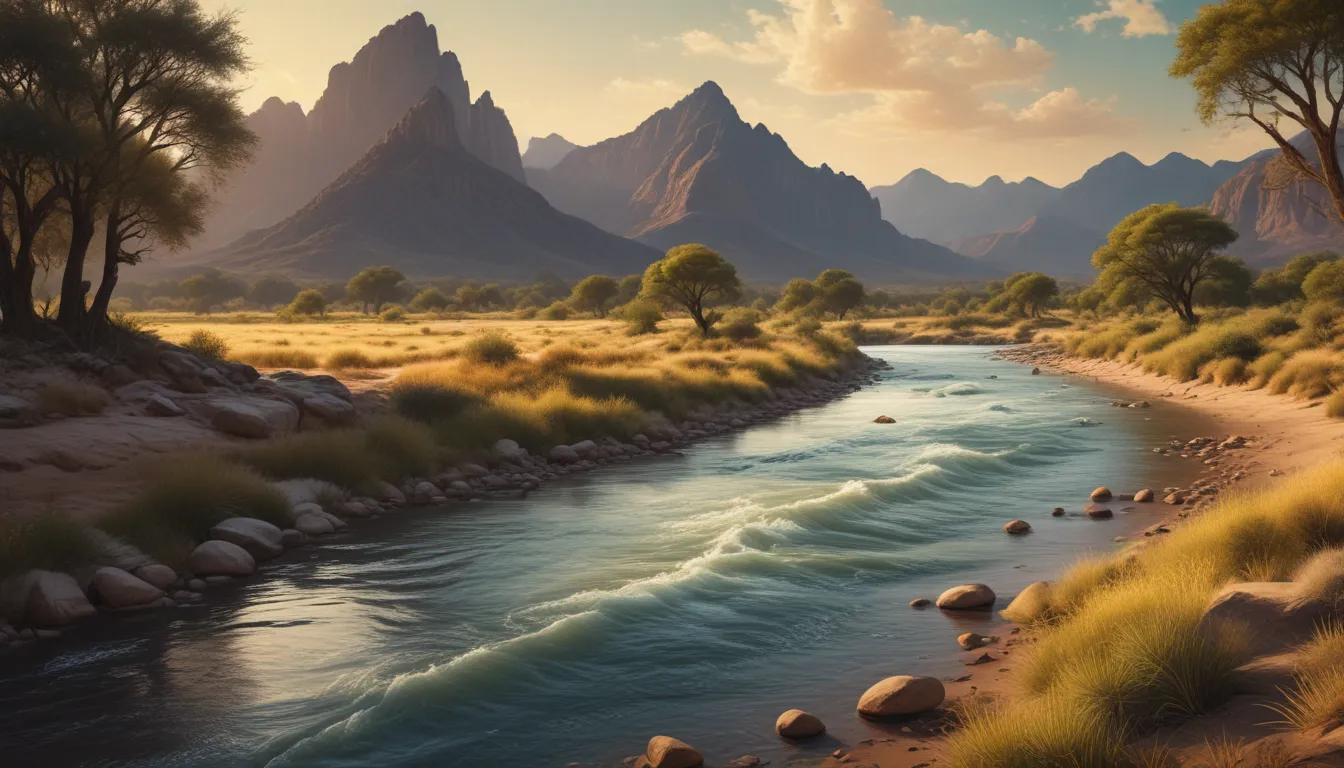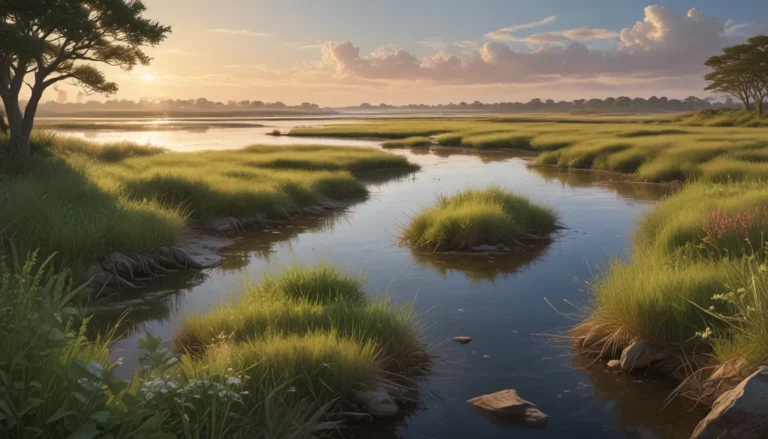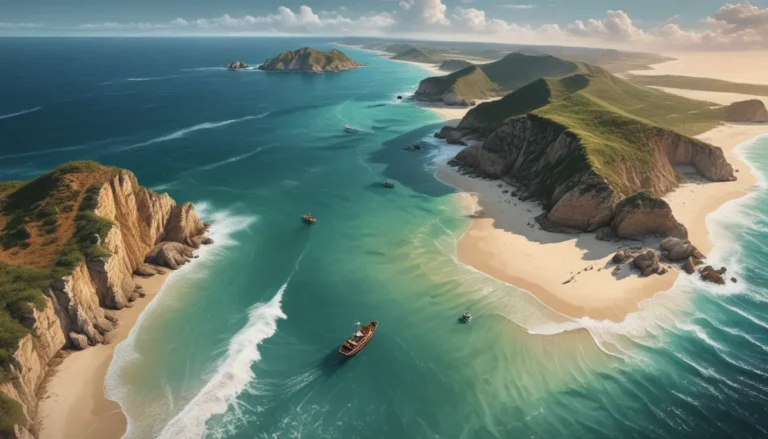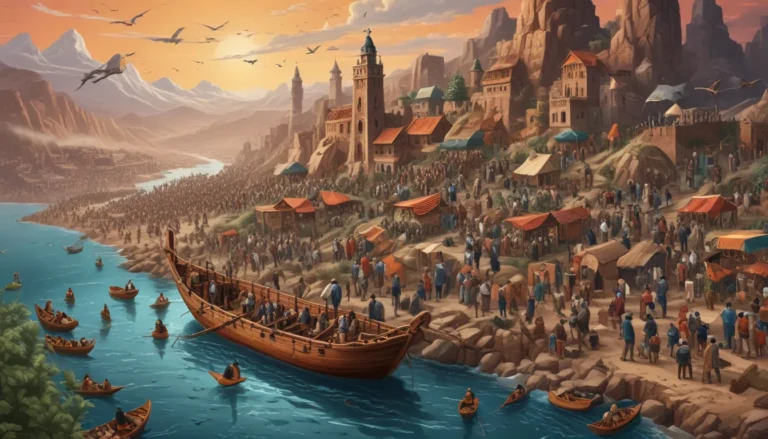A Note About Images: The images used in our articles are for illustration purposes only and may not exactly match the content. They are meant to engage readers, but the text should be relied upon for accurate information.
The Rio Grande River, known as Río Bravo in Spanish, is a mesmerizing waterway that meanders through the heart of North America, serving as a natural border between the United States and Mexico. With its rich history, diverse ecosystems, and cultural significance, the Rio Grande is a captivating subject of exploration. Join us as we delve into 18 intriguing facts about this iconic river, shedding light on its geological significance, ecological importance, and the impact it has on the communities it touches. From its origins in the San Juan Mountains to its delta near the Gulf of Mexico, the Rio Grande River has played a pivotal role in shaping landscapes and livelihoods, making it a vital part of the tapestry of North American geography and culture.
Unveiling the Mysteries of the Rio Grande River
The Rio Grande River, flowing approximately 1,896 miles from its source in the San Juan Mountains of Colorado to the Gulf of Mexico, is one of the longest rivers in North America. Its name, which means “big river” in Spanish, reflects its impressive stature and the essential role it plays in the region’s geography and history.
The Rio Grande: A Cultural Boundary
This iconic river forms a natural border between the United States and Mexico, influencing the landscapes and cultures on both sides. Its unique position has contributed to its rich cultural significance and the diverse heritage of the areas it traverses.
A Lifeline Through Time
Dating back to ancient times, the Rio Grande has sustained indigenous peoples and later, European settlers who relied on its waters for sustenance, agriculture, and transportation. Its historical and cultural importance is deeply intertwined with the development of civilizations in the region.
Embracing the Beauty of the Rio Grande
The Rio Grande River is known for its stunning landscapes and diverse ecosystems, showcasing a breathtaking array of scenery from New Mexico’s rugged canyons to Texas’ expansive floodplains. Its diverse habitats support a rich tapestry of plant and animal life, making it a vital hub of biodiversity.
Facing Environmental Challenges
Despite its beauty, the Rio Grande River faces environmental challenges such as water scarcity, pollution, and habitat degradation. Conservation efforts are needed to protect its natural integrity and ensure its longevity for future generations.
A Muse for Creativity
The river’s beauty and cultural significance have inspired artists, writers, and musicians, who have depicted its allure in various forms of creative expression. The Rio Grande’s influence extends beyond its physical presence, permeating the realms of art and literature.
Stories and Legends Along the Rio Grande
Throughout history, the Rio Grande has been steeped in folklore and legends, with tales of its mystical origins and the spirits said to inhabit its waters. These stories add to the river’s mystique, enhancing its captivating allure.
A Cinematic Backdrop
The striking scenery and cultural resonance of the Rio Grande have made it a sought-after location for filmmakers and television producers, serving as a backdrop for numerous films and TV shows.
An Outdoor Enthusiast’s Paradise
Outdoor enthusiasts flock to the Rio Grande to experience its natural beauty and engage in activities such as rafting, hiking, birdwatching, and camping. The river offers a wealth of recreational opportunities for nature lovers and adventure seekers.
The Role of the Rio Grande in Agriculture
The Rio Grande River is a vital source of water for agriculture, supporting the cultivation of crops that sustain local and regional food supplies. Its role in nourishing the fertile lands along its banks is integral to the agricultural productivity of the surrounding areas.
Historical Witness
Throughout the centuries, the Rio Grande has been a witness to significant historical events, including conflicts, trade, and cultural exchanges. Its currents have mirrored the ebb and flow of human history, shaping the destinies of those who depend on its waters.
Water Management Challenges
Given its importance as a water source for multiple states and countries, the Rio Grande is managed through a complex system of water rights, allocations, and agreements. Balancing the needs of various stakeholders is an ongoing challenge that requires careful planning and cooperation.
A Haven for Wildlife
The Rio Grande serves as a corridor for migratory birds, making it a crucial migratory route for a myriad of bird species. Birdwatchers and conservationists value the river as a haven for avian diversity and a critical link in the migratory pathways of feathered travelers.
Inspiring Conservation Efforts
Recognizing the ecological significance of the Rio Grande, conservation initiatives seek to preserve and protect its natural integrity. These efforts aim to safeguard the river’s ecosystems, promote sustainable practices, and ensure the longevity of this vital waterway for future generations.
The Rio Grande: A Symbol of Resilience
Despite the challenges it faces, the Rio Grande endures as a symbol of resilience and interconnectedness, reminding us of the intricate web of life that depends on its waters. Its story is a testament to the enduring bond between nature and humanity.
Cultural Pride and Heritage
For the communities that call its banks home, the Rio Grande is a source of cultural pride and heritage, woven into the fabric of their traditions, customs, and identity. Its significance transcends geographical boundaries, uniting people through shared experiences and a deep reverence for the river.
Captivating the Imagination
As the Rio Grande continues to wind its way through diverse landscapes and narratives, it continues to captivate the imagination, inviting exploration and contemplation. Its timeless allure and profound impact endure, shaping the past, present, and future of the regions it touches.
Conclusion
The Rio Grande River is a remarkable natural wonder, boasting a rich history, diverse ecosystem, and significant cultural importance. From its headwaters in the San Juan Mountains to its delta in the Gulf of Mexico, the Rio Grande River continues to captivate with its beauty and significance. Whether it serves as the source of irrigation for agriculture, a haven for wildlife, or a symbol of cross-border connections, the Rio Grande River stands as a testament to the power of nature and the enduring human connection to our environment.
FAQs
What is the significance of the Rio Grande River?
The Rio Grande River holds immense cultural, ecological, and economic significance. It serves as a vital water source for agriculture, supports diverse ecosystems, and symbolizes the connection between the United States and Mexico.
How long is the Rio Grande River?
The Rio Grande River stretches approximately 1,896 miles (3,051 kilometers) from its headwaters in the San Juan Mountains of Colorado to its mouth at the Gulf of Mexico.
Embark on a journey of discovery as you uncover the wonders of the Rio Grande River, a flowing narrative of resilience, inspiration, and interconnectedness. Explore its captivating history, diverse ecosystems, and cultural significance as you immerse yourself in the beauty of this iconic waterway.






